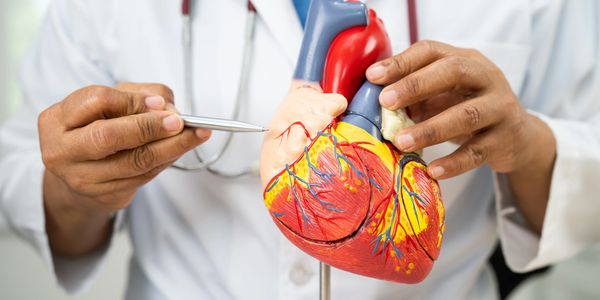Echocardiogram

An echocardiogram uses sound waves to produce images of your heart. This commonly used test allows your doctor to see your heart beating and pumping blood.
Your doctor can use the images from an echocardiogram to identify heart disease. Depending on what information your doctor needs, you may have one of several types of echocardiograms. Each type of echocardiogram has few, if any, risks involved.

Your doctor may suggest an echocardiogram if he or she suspects problems with the valves or chambers of your heart or if heart problems are the cause of symptoms such as shortness of breath or chest pain.
Depending on what information your doctor needs, you may have one of the following kinds of echocardiograms:
Heart Size
Weakened or damaged heart valves, high blood pressure, or other diseases can cause the chambers of your heart to enlarge or the walls of your heart to be abnormally thickened. Your doctor can use an echocardiogram to evaluate the need for treatment or monitor treatment effectiveness.
Pumping Strength
An echocardiogram can help your doctor determine your heart’s pumping strength. Specific measurements may include the percentage of blood that’s pumped out of a filled ventricle with each heartbeat (ejection fraction) or the volume of blood pumped by the heart in one minute (cardiac output). If your heart isn’t pumping enough blood to meet your body’s needs, this could result in heart failure.
Damage to the heart Muscle
During an echocardiogram, your doctor can determine whether all parts of the heart wall are contributing normally to your heart’s pumping activity. Parts that move weakly may have been damaged during a heart attack or be receiving too little oxygen. This may indicate coronary artery disease or various other conditions.
Valve Problems
An echocardiogram shows how your heart valves move as your heart beats. Your doctor can determine if the valves open wide enough for adequate blood flow or close fully to prevent blood leakage.
Heart Defects
Many heart defects can be detected with an echocardiogram, including problems with the heart chambers, abnormal connections between the heart and major blood vessels, and complex heart defects that are present at birth. Echocardiograms can even be used to monitor a baby’s heart development before birth.
Copyright © 2025 PMC Online - All Rights Reserved.
This website uses cookies.
We use cookies to analyze website traffic and optimize your website experience. By accepting our use of cookies, your data will be aggregated with all other user data.